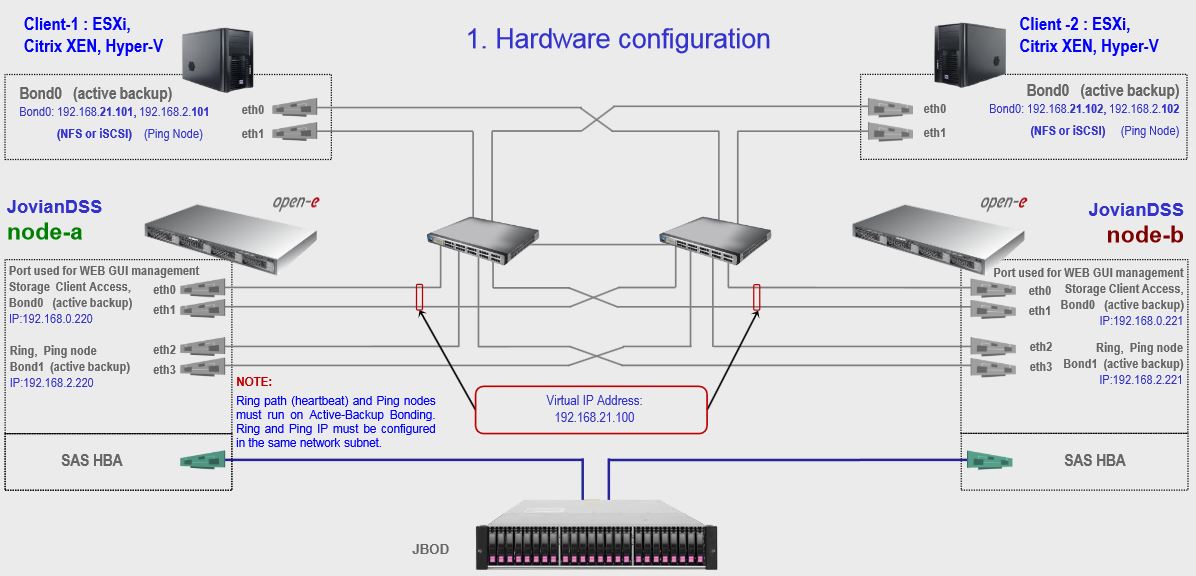If you are thinking about implementing a highly available environment in your organization, we recommend downloading our latest step-by-step guide prepared by Open-E’s team of data storage professionals. In no time you can create a highly available architecture with the help of Software Defined Open-E JovianDSS.
High Availability – redundancy and data protection
Remember that High Availability is not a privilege. It is a necessity that enables an organization’s capability to continue delivering their products and services during disruptive incidents. About 40% of service interruptions are caused by power station failures, 25% by hardware failures, and 13% are software failures, such as miss-configuration or severe bugs. What downtime mostly stands for are costs. But with Open-E’s failover technology and professional partner support, organizations are able to continue their business operations with 99.999% data availability.
Create and deploy HA clusters with Open-E JovianDSS
Open-E JovianDSS uses shared storage to provide unlimited options to architect High Availability environments. It is the answer to almost any storage requirement, either as a single node, a virtualized HA setup or a Big Data cluster environment. Thanks to a set of advanced built-in features and seamless integration with popular virtualization tools it is the best storage solution for companies thinking of implementing HA clusters. The ZFS-based solution includes failover functionalities for NFS and iSCSI – a crucial feature when it comes to protection of your business-critical data.
With Open-E JovianDSS High Availability Cluster Feature Pack you can ensure reliability and redundancy through failover in case of a server crash. The HA cluster management software enables a quick access to features related to the cluster setup. For better data protection Open-E JovianDSS offers redundancy and eliminates single points of failure.
High Availability with NFS or iSCSI
Download our how-to guide to easily deploy High Availability clusters in your IT environment. Here’s what you’ll find inside the document:
- Hardware configuration
- Creating new Pools and iSCSI Targets
- Network configuration
- Time and date setting
- Nodes Binding and Ping Nodes
- Critical I/O handling setup
- Starting the cluster service
- Entering Virtual IP
- System monitoring setup and failover test







Leave a Comment